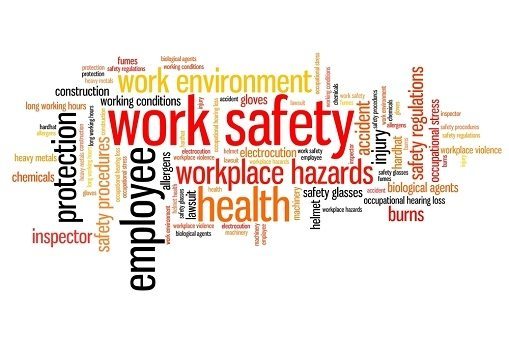Workplace Safety: Best Practice, Compliance, and Trust in the New Normal
Amidst renewed urgency for reopening, employers confront two major issues – the proverbial regulatory hammer dropping and an alarming crisis of confidence in workplace safety. Emerging safety technologies can provide a major boost on both fronts.
First, President Biden has signaled a more robust approach to OSHA regulation and enforcement than his predecessor. Forthcoming Emergency Temporary Standards (ETS) regulations for employers, directed by an executive order issued on the first day of the Biden presidency, will be accompanied by a recently announced National Emphasis Program (NEP) for COVID-19 enforcement actions in higher hazard industries and an updated Enforcement Response Plan (ERP) to “prioritize COVID-19-related inspections involving deaths or multiple hospitalizations due to occupational exposures.”
Second, a widely cited poll of 3,400 respondents across seven countries conducted by Edelman in late 2020 yielded striking results. Only half of employees believed that office spaces are safe. Employees placed the least amount of confidence in CEOs and senior managers to lead on return to work (14%). Most respondents received the majority of their virus-related information from mainstream and social media, but questioned its fundamental credibility. As employers prepare for return to work in a pandemic and post-pandemic world, how should they navigate this complex regulatory environment and overcome the trust deficit from employees? At risk of sounding overly simplistic, the answer is clear: they need to create a safe workplace based on best practice and regulation, and they need to communicate to employees with consistent, high quality, and reliable information.
How do we create a safe workplace? For an airborne pathogen like SARS-CoV-2, best practice and regulation have increasingly emphasized the critical importance of ventilation, filtration, and engineering controls to mitigate airborne exposure risk. The American Industrial Hygiene Association’s (AIHA) states, “Engineering controls that can keep infectious aerosols at very low levels indoors offer the greatest promise to protect non-healthcare workers and other vulnerable populations as we reopen our businesses and workplaces.”
AIHA recommends “effective, simple-to-use, and inexpensive” tools to assess pathogenic exposure risk and verify efficacy of engineering controls in real world environments. However, the reality is that existing tools fail to meet these three criteria, including applied tools like tracer gases, anemometers, and balometers for ventilation and particle challenge methods for filters, as well as theoretical tools like computational fluid dynamic modeling and volumetric airflow calculations.
From an efficacy standpoint, existing tools have two major drawbacks: (1) they are not aerosol-based and therefore are limited in their ability to verify ventilation and filtration efficacy for an aerosol contaminant like SARS-CoV-2; and (2) none provides a combined assessment of ventilation and filtration efficacy in one test, requiring triangulation between multiple methods to verify engineering controls holistically. Beyond efficacy, most existing tools are also overly complicated and costly, ultimately deterring regular effective verification.
As management guru Peter Drucker famously once said, “if you can’t measure it, you can’t improve it.” Fundamentally, toolbox limitations compromise our ability to accurately and regularly measure exposure risk and manage prevention and communication efforts, directly undermining workplace safety, regulatory compliance and employee confidence. Assessments often fail to produce high quality defensible data and thus create liability for employers. Moreover, employers’ limited ability to communicate data clearly, compellingly, and consistently perpetuates employee mistrust in workplace safety.
While the pandemic has exposed critical toolbox limitations, it has also spurred groundbreaking innovations that have pushed us closer to effective, simple to use, and inexpensive solutions that enhance workplace safety, regulatory compliance, and employee trust.
In conclusion, the rapidly evolving regulatory environment and pervasive employee trust deficit in workplace safety means that the cost of inaction for employers is high. Emerging OSHA regulation and enforcement compels employers to act immediately in order to become compliant, avoid citations and penalties, and limit legal liability with defensible data. Meanwhile, employers need to be proactive in enhancing workplace safety and communicating their efforts consistently with high quality, reliable data to employees like never before. Hiring a Security Firm may be helpful to regulate compliance.
Contact NC Protection Group today to speak with a specialist about a customized plan for your company’s needs. 919-886-NCPG (6274)




